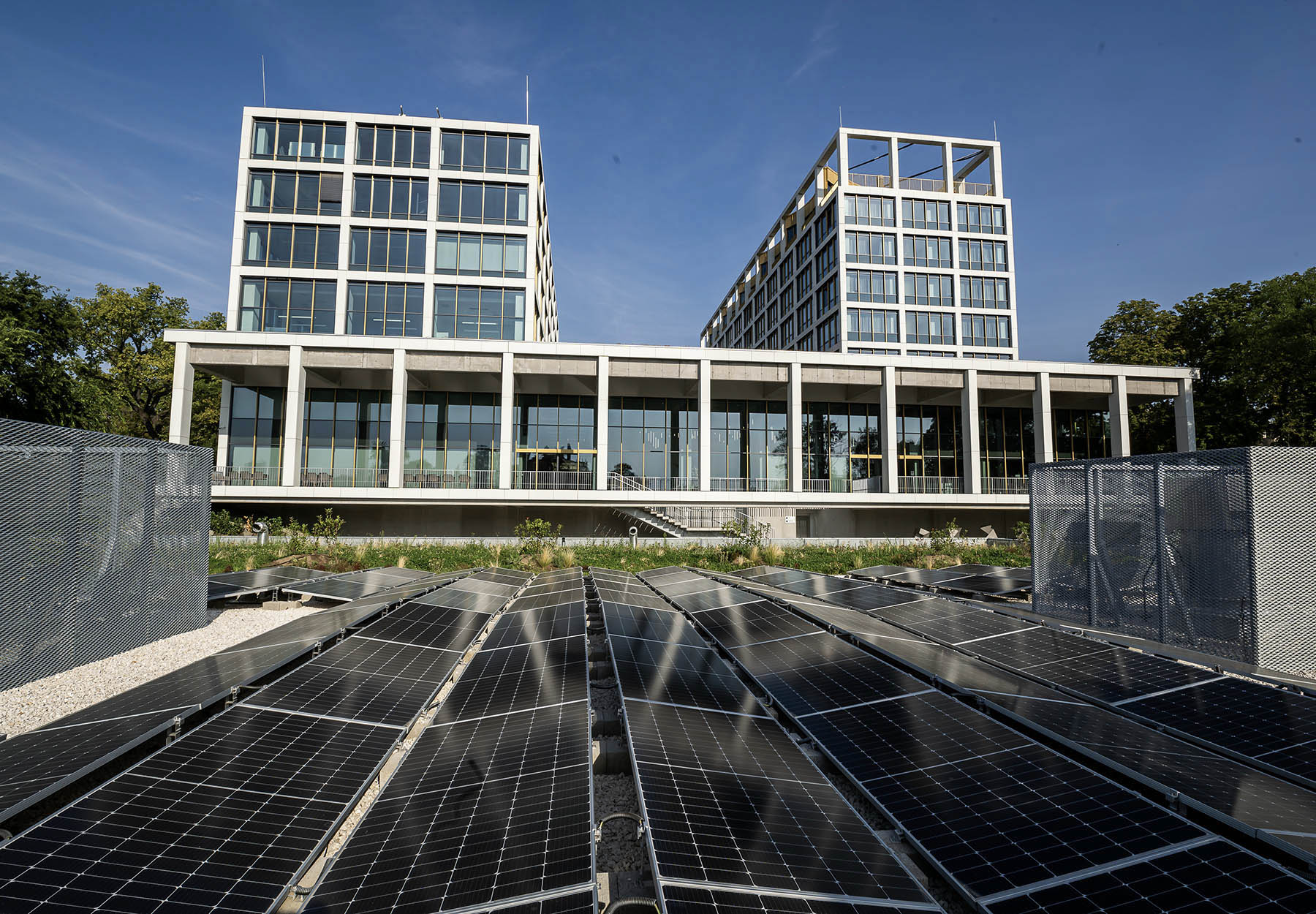What differentiates the historical evolution of China and Europe? – Guido Tabellini’s presentation at the prize-giving ceremony

The John von Neumann Award ceremony was held on the 4th of March in the auditorium of the Gellért Campus. The award is given by the students of Rajk College for Advanced Studies to a thinker who has accomplished remarkable scientific achievements in the field of social sciences. The body of work of this year’s awardee, Guido Tabellini, is centered around behavioral and political economics, institutional development and culture, and macroeconomics.
The host of the evening was Bernadett Belényesi, who first welcomed the board of directors of Rajk College for Advanced Studies, including Prof. Attila Chikán, the director of Rajk College for Advanced Studies, Prof. Gábor Simonovits, the scientific director of the college, Otília Biszák, the head of the student council, and Máté Grenczer, member of the organizing committee of the event. Following that, she asked Stefánia Plankó, president of the scientific committee of the college, to deliver her opening speech about the John von Neumann Award, in which she mentioned that the award in question had several recipients who were later awarded the Nobel Prize in Economics.
Afterward, Máté Grenczer delineated the scientific trajectory of Tabellini and noted that the multidisciplinary approach of science is important for the students of Rajk College for Advanced Studies, and the work of the Italian economist sets an example for them in that regard.
Having received the award, Tabellini thanked the college members for the accolade and emphasized that it’s a special honor for him to be acknowledged by students. His lecture was based upon a book to be published this autumn by Princeton University Press, under the title of Two Paths to Prosperity: Culture and Institutions in Europe and China, 1000-2000, written by him and two co-authors, Avner Greif and Joel Mokyr.
In his presentation, the economist outlined that while China was an economically, scientifically, and culturally prosperous nation around the first millennium, Europe was considered a relatively backward and poor territory. This is partly explainable by the fact that China unified its lands very early on, while in Europe, states were emerging more slowly.
The structure of societal organizations was also completely different, the state institutions in Europe were built upon an already existing social construction, whereas in China, this happened conversely. Moreover, in China, cooperation laid upon dynastic ties and kinship, while in Europe, the nuclear family model already appeared in the Early Middle Ages, which, however, was too small to handle the local public goods. The activity of the Chinese clans could be compared to the work of fraternities in Europe. Guilds and monasteries also greatly impacted societies, and while municipalities were present in Europe, leadership lay in the hands of the state in China. Furthermore, the approach to legislation was quite different: in Europe, it was based on civil law, while in China, it was grounded on penal law.
Tabellini also stated that, according to his research, scientific discoveries in Europe during the Early Middle Ages were more successful because there were greater amounts of funding available for their realization, alongside the fact that scientists had more freedom for experimenting. It should also be mentioned that in China, discovery by pragmatic means was more common, while theoretical and targeted research was more popular in Europe.
After the presentation, the audience members raised their questions to Tabellini, among others, about China’s societal and economic structure and the historical significance of royal families in Europe, all of which the protagonist of the evening accommodatingly answered.